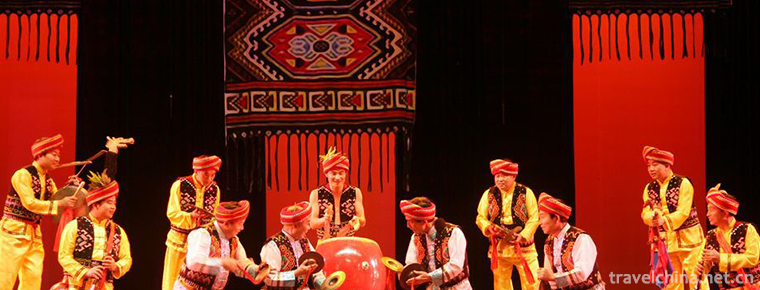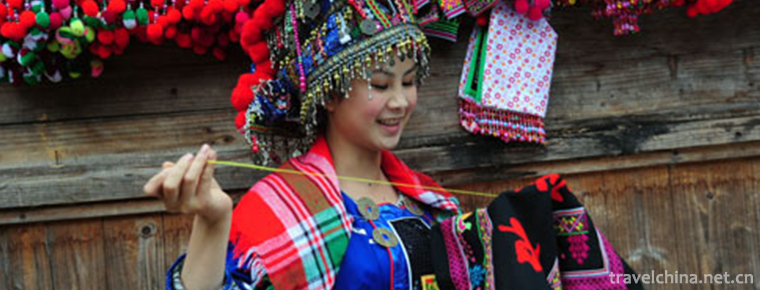Construction Skills of Russian Nationality Residences
Construction Skills of Russian Nationality Residences
Historically, Tacheng once had the reputation of "Oriental Moscow", which is by no means a historical accident. It has a close relationship with the border trade in the past 150 years. In the past one and a half centuries, due to the immigration of Russians, Russian folk houses and architectural art have also entered Xinjiang. They began to build houses in Tacheng, Ili, Urumqi and other places. According to the Russian architectural art and the reality of Xinjiang, churches, schools, houses, office buildings and other buildings have been built.
On June 7, 2008, the construction techniques of Russian folk houses were approved by the State Council and listed in the second batch of national intangible cultural heritage list.
Architectural characteristics
Tacheng, a border city located in the northwest corner of Xinjiang, is a small town full of Russian flavor. Its strong Russian flavor is not only reflected in the Russian delicacies such as Marosh ice cream, Gevas, Leba, Malina sauce, but also in the unique flavor slowly emitted by those Russian-style buildings. Cloak-style black iron roof, wooden floor, tall house, thick walls, interior furnaces, carved tables and chairs, these elements have contributed to the unique style of Russian architecture. The Russian-style buildings, such as the Red Tower, the Double Tower and the Fourth Middle School Teaching Building, have become the landmark buildings of Tacheng.
According to Guo Xiangfei, director of Tacheng intangible cultural heritage protection research center, at the beginning of liberation, Tacheng had nearly 300 Russian-style dwellings and public facilities, only 10 of which were built between the end of the 19th century and the founding of New China. The rest were built in the 1950s and 1960s. In Northeast Harbin, although there are many Russian-style buildings, most of them were official buildings of the year, and there are few folk houses. Few people in the area would like to build skills here.
Protecting and inheriting the skills of Russian dwelling construction is of great significance to the study of Russian culture, history, architectural art and folklore in Xinjiang, China. Tacheng is going to renovate two hundred-year Russian-style dwellings in accordance with the principle of "repairing the old as the old". The layout will be restored. The old furnaces, floors and furniture will be used to decorate the courtyard with gardens and swings. This will be a live demonstration of Russian-style families.
Historical evolution
The existing 10 Russian-style buildings in Tacheng are only a microcosm of the past. Many of them were seriously damaged during the "Cultural Revolution". The original churches and some schools and houses were demolished. The decorations of many buildings were destroyed. A few of them were preserved. Due to financial problems, they were not repaired and protected, and were shaking into dangerous houses. Due to the need of urban modernization, the number of old-fashioned Russian buildings is decreasing year by year, and the number of people who know the skills of building Russian dwellings is getting smaller and smaller. There are few people who really know the skills of building Russian dwellings. Some craftsmen are getting older and younger, so the skill of building Russian folk houses is facing loss.
Only more than a dozen people in Tacheng know how to build Russian houses. They are basically over 60 years old. In addition to Zhang Huaisheng, there is also an inheritor at the autonomous region level, who is a bricklayer. There are objective reasons why young people are unwilling to learn this skill. Guo Xiangfei said that the Russian residential building skills can no longer become a means of livelihood, so we do not advocate that learners regard it as a career, but as an art to love and pass it on.
Tacheng intangible cultural heritage protection research center now organizes one or two interest groups for young people to learn from their successors once or twice a month, and those who show outstanding performance will be rewarded. It also encourages future generations of existing non-hereditary heirs to learn as a family responsibility.
Zhang Huaisheng is gratified by these practices. In his view, if Russian woodworking technology is not used as a means of livelihood, young people will love it, just as he turned from unwillingness to obsession.


-
Putaogou Scenic Area Turpan City
The Putaogou Scenic Area in Turpan City is located in the Flame Mountain, 11 kilometers northeast of Turpan City, Xinjiang. It is about 8 kilometers long in the South and 2 kilometers wide in the East.
Views: 171 Time 2018-12-12 -
Xishan Scenic Area Kunming Yunnan
The Xishan Scenic Area in Kunming, Yunnan Province, is a forest park with ups and downs, verdant trees, white birds contending and beautiful scenery. Dense forest vegetation.
Views: 159 Time 2019-02-25 -
Xingtai Grand Canyon Tourist Area
Xingtai Grand Canyon is a national AAAA scenic spot, a national key scenic spot and a national geological park of China. It is located in Hejiaping Village, Luozhen, Southwest Road.
Views: 239 Time 2019-02-26 -
Tibetan Cobalt Technology
Zhang Zhaxi, a Tibetan cobalt-smelting craftsman over half a century old, told reporters that he was just "catching its tail" when the craft was losing its popularity..
Views: 164 Time 2019-04-15 -
Tibetan folk songs
Tibetan folk song is a magnificent flower in Tibetan folk literature, with profound ideological and high artistic quality. Throughout the development process of Tibetan folk songs.
Views: 217 Time 2019-04-15 -
Single string ziqu contains bifurcation
Single string ziqu, quyiqu. It is popular in Beijing, Tianjin, North China and Northeast China. During the reign of Guangxu in Qing Dynasty, folk artists compiled their own lyrics with octagonal drum .
Views: 238 Time 2019-04-25 -
Construction Techniques of Luling Traditional Dwellings
The traditional wooden structure construction technique is an ancient traditional handicraft of the Han nationality. The traditional architecture of the Han nationality is a building system with woode.
Views: 271 Time 2019-05-15 -
Tujia people slip away
Dalaozi is an ancient folk instrumental ensemble which is the most widely spread in Tujia area. It has a long history, a wide range of music cards, exquisite skills and rich expressiveness. It is a un.
Views: 118 Time 2019-06-23 -
Yao embroidery
Yao embroidery is exquisite and delicate. Women practice flower-picking at the age of 6-7. When he grew up, he became a master of embroidery. Yao embroidery patterns are mainly used to represent trees.
Views: 140 Time 2019-07-11 -
Mounting and repairing techniques
The mounting and repairing technique of ancient Chinese characters and paintings is a kind of traditional Chinese handicraft. It is used for restoration and restoration of ancient calligraphy and pain.
Views: 359 Time 2019-08-10 -
Historical evolution of Yibin
In the sixth year of Jianyuan (135 B.C.), Emperor Wu of Han Dynasty established Qianwei County, and at the beginning of the county administration, he (the west of Zunyi City, Guizhou Province) was established. In the first year of the first Yuan Dynasty of emperor Z.
Views: 375 Time 2020-12-18











